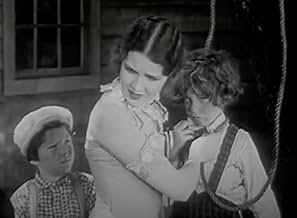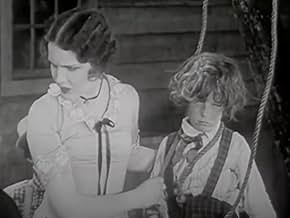Ajouter une intrigue dans votre langueA good-natured cowboy who is romancing the new schoolmarm has a crisis of conscience when he discovers that his best friend is engaged in cattle rustling.A good-natured cowboy who is romancing the new schoolmarm has a crisis of conscience when he discovers that his best friend is engaged in cattle rustling.A good-natured cowboy who is romancing the new schoolmarm has a crisis of conscience when he discovers that his best friend is engaged in cattle rustling.
- Réalisation
- Scénario
- Casting principal
- Récompenses
- 3 victoires au total
- Saloon Singer
- (non crédité)
- …
- School Student
- (non crédité)
- Minor Role
- (non crédité)
- Student
- (non crédité)
- Fred
- (non crédité)
- School Student
- (non crédité)
- Bug Ears
- (non crédité)
- School Student
- (non crédité)
Avis à la une
The classic representations of good and evil through black and white are used extensively and effectively in this film. Cooper always wears white, the villain(Huston) always wears black. However, the most morally ambiguous character, Cooper's friend Steve, always wears a mixture of the colors, and as he continues down a dark path, his colors become darker and less ambivalent.
This is a pretty good movie, particularly the hanging scene, the shootout at the end, and basically any interaction between Cooper and Huston. What makes the movie even more entertaining and fascinating to watch is its context. This movie is considered to be one of the very first westerns to represent the classic elements of the western genre, and its influence on later westerns is quite clear. For film students and fans of the western genre alike, this is a fun film to watch and thoroughly enjoyable. (Note: very interesting comparisons can be made to later westerns, particularly "Shane" and another Cooper film, "High Noon")
Virginia-born cowhand Cooper woos schoolmarm Brian in small Wyoming town, tangles with roughneck outlaw Huston. First talkie for both Cooper and director Fleming, adapted from the book of the same name (considered one of the first true western novels), which had already been turned into a play and a pair of silent movie versions. Cooper struggles with the accent, but cuts an upright, stoic figure even this early in his career; Huston is barely recognizable but makes the grade as an appropriately hissable black-hat. Uneven pacing in the first half, including a few obvious instances of padding (such as the baby-swapping prank), gives way to more compelling later episodes, including a harrowing resolution to a difficult decision the protagonist makes in regard to some cattle rustlers. Even in its restored format, the picture and sound quality of current prints is somewhat lacking, but the movie is still a worth a watch for anyone who enjoys old-timey oaters.
62/100
Here, the narrative is always direct and to the point, never losing sight of what needs to come next to get to the end. The scenes are short, in a blunt style that reminds of the silent era rather than of more modern movies, but that's part of the charm when you watch it now, almost a century after it was filmed. Nevertheless, Victor Fleming makes good use of the newfound ability to use dialogue to tell an effective story.
The quality of the prints that have reached us is not perfect, but good enough to appreciate this early western, from just when Hollywood was starting to use synchronized recorded sound.
Le saviez-vous
- AnecdotesGary Cooper's first all-talking film. He felt that sound would ruin him, believing his voice was not adequate to the task. This film turned him from a promising young leading man into a star, although he was not considered a superstar until L'extravagant Mr. Deeds (1936).
- GaffesWhen the posse spots the rustlers, The Virginian says that the posse will split into three parties, then splits them only in two.
- Citations
Trampas: Well, who's talkin' to you?
The Virginian: I'm talkin' to you, Trampas!
Trampas: When I want to know anything from you, I'll tell ya, you long-legged son-of-a -...
The Virginian: [Trampas stops talking abruptly as the Virginian's pistol is pressed against his abdomen] If you want to call me that, smile!
Trampas: With a gun against my belly, I - I always smile!
[He grins broadly]
- Versions alternativesThis movie was also issued in a silent version, with film length of 2257.65 meters.
- ConnexionsFeatured in La ville du diable (1937)
- Bandes originalesPop! Goes the Weasel
(uncredited)
A 17th-century English children's song
Played at the dance
Meilleurs choix
- How long is The Virginian?Alimenté par Alexa
Détails
Box-office
- Budget
- 425 000 $US (estimé)
- Durée
- 1h 31min(91 min)
- Couleur
- Rapport de forme
- 1.20 : 1
- 1.37 : 1

































